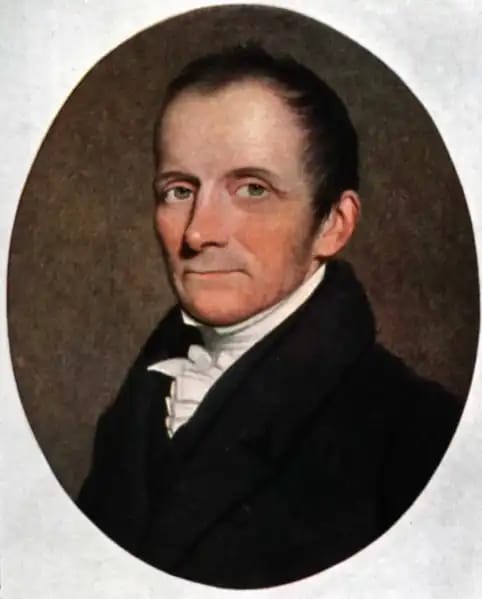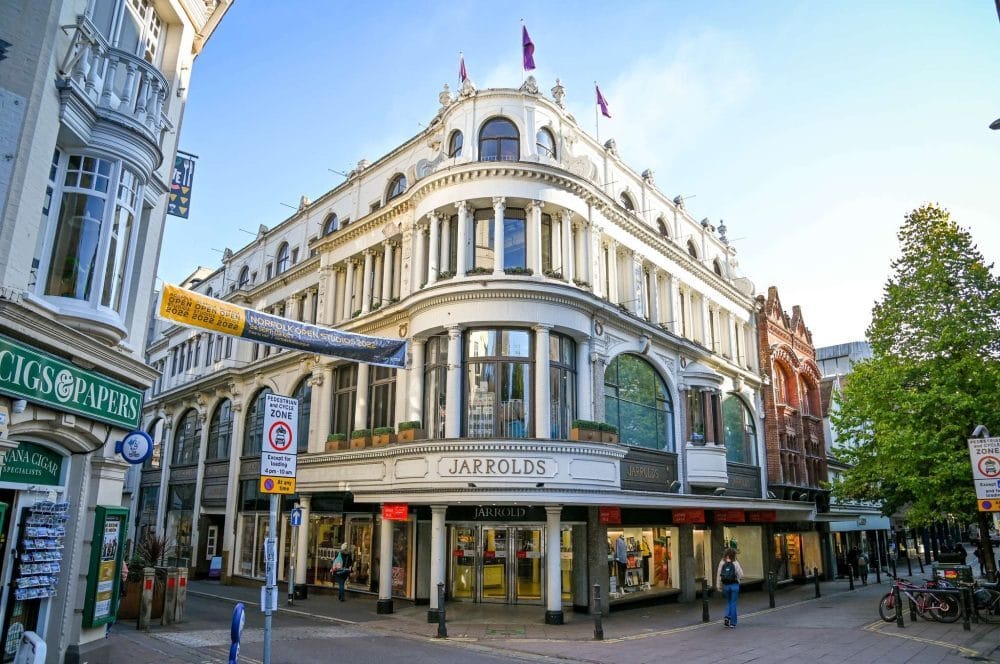- The Secret Norwich Newsletter
- Posts
- Who was John Jarrold II?
Who was John Jarrold II?
And why did he pursue legal action over some turnips?
Alright?
Sorry I missed last weekend - life got in the way. It should really know better.
Anyway, we’re back today with a story about one of Norwich’s most famous founding fathers: John Jarrold II. As far as sequels go, he’s definitely one of the better ones.
Before that, we’re running a pub tour next Sunday. Norwich’s history, told through the eyes of four of its most famous pubs. Learn some stuff, have a drink, maybe even meet some nice people.
Right, back to John. On the one hand, he was the model of a community champion. On the other hand, he was a bit of a grumpy old git.
Learning a little bit about the history of the Jarrolds is sort of a rite of passage for Norwich folk. This is the story of the man behind the name. Stick the kettle on and settle in.

A Norfolk man of industry.
Let’s start by acknowledging two elephants in the room:
Elephant 1) The Jarrold business started in Suffolk.
Elephant 2) The Jarrold family is actually French.
The Jeraulds, as they were known once upon a time, arrived in Essex from France in the late 1600s and, by the early 1700s, Samuel Jarrold was the Mayor of Colchester.
In 1770, John Jarrold (the first one, then only 25 years old) opened a grocer’s in Woodbridge, Suffolk (boo). It was successful, but John would die five years later at the age of 30 from “a raging fever”.
A friend looked after the business until the protagonist of today’s newsletter, the creatively named John Jarrold II, was old enough to inherit it. And inherit it he did.
John Jarrold II moved the business to Norwich in 1823 (on London Street, but not the same address as the current store) and expanded it into printing, publishing and retail. He was deeply evangelical, a committed nonconformist and strongly motivated by social justice.

John Jarrold II, looking decidedly peeved.

Jarrold vs Turnips.
Jarrold did a lot of good. He financed the printing of tracts aimed at improving working-class lives. He invited abolitionist speakers to Norwich and supported the campaign against the slave trade.
He once claimed he donated more to charity in a year than he paid his sons in wages. So, in other words, he wasn’t your typical ‘Dickensian’ Victorian businessman.
“JJ”, as he was probably known to his mates, also belonged to a non-conformist Congregational Church. These controversial congregations gathered in people’s homes and were seen as a threat to the traditional established church. So much so, in fact, that Anglicans would gather in a mob outside these houses with drums, trumpets and gongs, making as much noise as they could to disrupt the non-conformist gatherings.
These mobs would also throw stuff, but because eggs and milkshakes weren’t available, they’d hollow out turnips and fill them with shit instead. Which actually makes eggs and milkshakes seem pretty dreamy, by comparison.
Jarrold II took it upon himself to address these matters in court, shouldering the financial cost, which led to some of the turnip-throwers being fined. He also registered his own house as a place of worship.

Grumpy as old boots.
Jarrold could also be incredibly stern.
Although he got on well with his eldest son, John James, his relationships with his younger sons were difficult. He considered them useless, refused to treat them as partners, paid them very little and ended up in legal disputes with them.
He once said, ‘They derived all their wealth from me,’ which gives us a glimpse into what the vibe must’ve been like at family dinners. Ever seen Succession? Think Logan Roy.
To make matters worse, Jarrold’s favoured eldest son died young, which appears to have strained things further with the surviving brothers.
So behind the public generosity, there was a family story full of disappointment, strictness and sadness. You have philanthropy on the outside and emotional frostbite within.

John’s legacy.
John Jarrold II was a complex, powerful, and influential man who would have a greater influence on Norwich than most.
Whilst his relationship with his sons was strained, one of them, Samuel Jarrold, would successfully take over the business in 1844. In 1878, Jarrolds published Black Beauty, and in the early 1900s, the current department store was opened under the leadership of Samuel’s sons, William and Herbert.

The building was designed by George Skipper, who also did the Royal Arcade.
These days, Jarrolds is far more than just a department store. From property management to a marketing agency, the Jarrold Group may have expanded, but it remains a family-owned business. Who says nepotism is dead?

Right, I hope you’ve enjoyed today’s brief history lesson. Enjoy the rest of your Sunday.
See you next week,
Secret Norwich
Good email?I'll read every answer. |